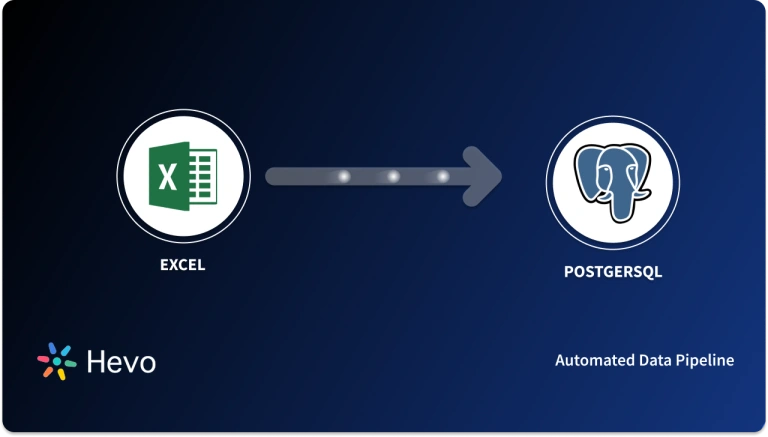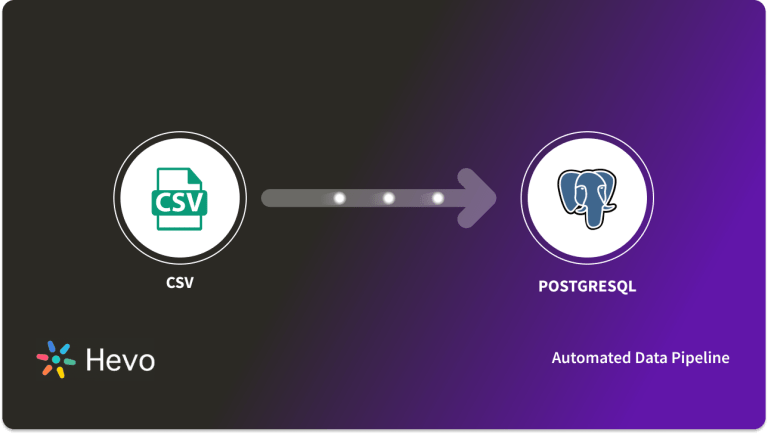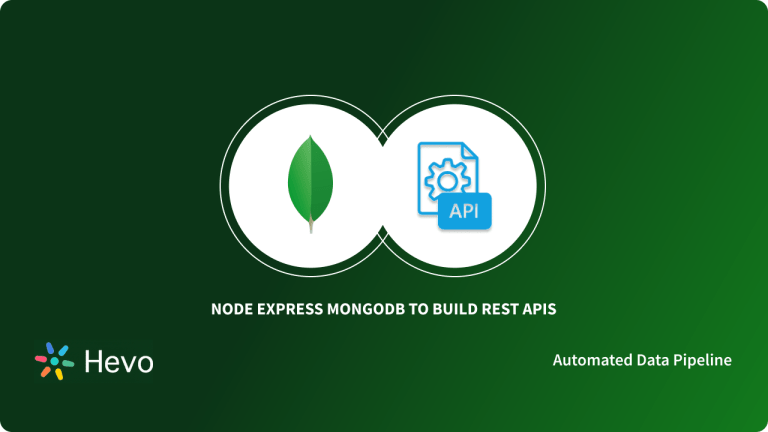MongoDB is a leading NoSQL database and provides a wide range of functionality along with versatility for allowing various data types and structures for storage. PostgreSQL is also a robust platform for RDBMS which is traditional.
This is good for storage but restricts the ability to gain information from data. Moving data from PostgreSQL to MongoDB helps resolve this issue to some extent.
This article provides a step-by-step guide to transferring data from PostgreSQL to MongoDB.
Ditch the manual process of writing long commands to connect your PostgreSQL and choose Hevo’s no-code platform to streamline your data migration.
With Hevo:
- Easily migrate different data types like CSV, JSON etc.
- 150+ connectors like PostgreSQL and Google Sheets(including 60+ free sources).
- Eliminate the need for manual schema mapping with the auto-mapping feature.
Experience Hevo and see why 2000+ data professionals, including customers, such as Thoughtspot, Postman, and many more, have rated us 4.3/5 on G2.
Get Started with Hevo for FreeTable of Contents
Steps to Connect PostgreSQL to MongoDB
Transferring data from PostgreSQL to MongoDB is a simple process. The complexity depends on the structure of the document and the data present in the PostgreSQL database and the structure required in the MongoDB database.
The process to move data is a two-step one where the data from PostgreSQL and then import the data into MongoDB using the mongoimport command.
Two methods to move data from PostgreSQL to MongoDB include:
- Method 1: Using TSV to transfer data from PostgreSQL to MongoDB
- Method 2: Using JSON to transfer data from PostgreSQL to MongoDB
Method 1: Using TSV to transfer data from PostgreSQL to MongoDB
The TSV layout is a fast and clean option for PostgreSQL to MongoDB. However, it best works if the unique PostgreSQL schema is surprisingly easy and also you don’t want to embed files in different files with a one-to-many relationship for moving data from PostgreSQL to MongoDB.
For instance, in case you want to create a group of files that constitute clients and plan on embedding every customer’s order in those files, TSV won’t paintings as it doesnt aid hierarchical information structures. Each row inside the TSV turns into a document. You can nevertheless map values in every row to fields deeper for your files; you simply can`t embed files.
You could create an address field and create nested state and city fields as in the example below. However, you couldn’t store multiple address entities
Consider the PostgreSQL created table “users.”
postgres=# select * from users;
userid | first_name | last_name | logins | upgraded | city | state
--------+------------+-----------+--------+----------+------+-------
1 | Bob | Smith | 10 | t | NYC | NYCOPY (SELECT
userid AS "userId.int32()",
logins AS "loginCount.int32()",
first_name AS "firstName.auto()",
last_name AS "lastName.auto()",
CASE WHEN upgraded=TRUE THEN 'TRUE' ELSE 'FALSE' END AS "upgradedAccount.boolean()",
city AS "address.city.auto()",
state AS "address.state.auto()"
FROM
users
) TO '/tmp/users.tsv' WITH (FORMAT CSV, HEADER TRUE, DELIMITER E't');As seen in the example for PostgreSQL to MongoDB, we are trying to rename each column that needs to be exported using the AS command. The alias that is created is of the type mongoFieldName.type(). for instance userId.int32() is a alias. When we use the mongoimport for executing the import of PostgreSQL to MongoDB, the command will parse the header and create fields based on types. In the general use case, we use the auto() command of mongoimport to self-determine the type based on context.
For the column that is UPGRADED, which is of type BOOLEAN, the PostgreSQL returns t for true and f for false, and the default value won’t’ be recognized, hence the case statement issued to determine the values based on condition.
Limited data nesting can also be done using the TSV migration process in PostgreSQL to MongoDB. The dataset’s city and state fields can be considered an example for moving data from PostgreSQL to MongoDB.
The end line of the query is the one that exports as CSV using a tab delimiter. this converts it into TSV format. This command is used to export files into MongoDB:
mongoimport --uri mongodb+srv://<mongodb_user>:<mongodb_password>@<altas-cluster>.mongodb.net/<DATABASE>
--collection users --type tsv --file users.tsv --headerline --columnsHaveTypesThis will result in the following document in the “users” collection after PostgreSQL to MongoDB:
{
userId: 1,
first_name: "Bob",
last_name: "Smith",
LoginCount : 10,
upgraded : true,
"Address" : {
"city" : "NYC",
"state" : "NY" }
}Method 2: Using JSON to transfer data from PostgreSQL to MongoDB
This method for moving data from PostgreSQL to MongoDB is effective when the database schema is complex and in the end, you require nested arrays of records documents using JSON for data migration.
To utilize the JSON to generate the results of the PostgreSQL query, you require three functions:
row_to_json:It returns the column name as keys and the value as rows and then row as a JSON object.array_to_json:returns an array of data as a JSON array.array_agg:Accepts a set of values and returns an array where each value in the set becomes an element in the array
Let’s look at an orders table which in our relational schema keeps a record for every product ordered by the user:
id | userid | product | quantity | price
----+--------+---------+----------+-------
1 | 1 | shoes | 4 | 50.75
2 | 1 | razer | 20 | 1.75Here is an example of PostgreSQL to MongoDB query using all three functions:
COPY (SELECT row_to_json(results)
FROM (
SELECT userid,first_name, last_name,
(
SELECT array_to_json(array_agg(o))
FROM (
SELECT id, product, quantity, price
FROM orders
WHERE products.userid = users.userid
) o
) AS orders
FROM users
) results) TO '/tmp/orders.json' WITH (FORMAT text, HEADER FALSE);The query above will create a file orders.json with JSON documents for each user from the user’s table:
{
id: 1,
first_name: "Bob",
last_name: "Smith",
"orders" : [
{
"id" : 1,
"product" : "shoes",
"quantity" : 4,
"price" : 50.75
},
{
"id" : 2,
"product" : "razer",
"quantity" : 20,
"price" : 1.75
}
]
}Once you have written the query and saved it, you can use mongoimport to import the file:
mongoimport --uri mongodb+srv://<mongodb_user>:<mongodb_password>@<atlas-cluster>.mognodb.net/<DATABASE>
--collection orders --jsonArray orders.jsonMethods for Postgres to MongoDB migration: TSV Vs JSON
| Method | Data with simple schema | Data with complex schema | Export Manually | Import to Mongo Manually | Fully Automated | Pulls data Automatically | Free to use | Need CLI login for every use |
| TSV | Yes | No | Yes | Yes | No | No | Yes | Yes |
| JSON | Yes | Yes | Yes | Yes | No | No | Yes | Yes |
To migrate from Postgres to MongoDB, you might want to think about the following things:
- Does your data have a rapidly changing structure? If yes, MongoDB is a great choice to deal with complex data structures.
- Does your application require a high velocity, high volume workload?
- What are your organization’s preferences?
Additional Resources for PostgreSQL Integrations and Migrations
- How to load data from postgresql to biquery
- Postgresql on Google Cloud Sql to Bigquery
- Integrate Postgresql to Databricks
- Replicate Postgres to Snowflake
- Export a PostgreSQL Table to a CSV File
Conclusion
MongoDB and PostgreSQL are trusted sources that a lot of companies use as they provide many benefits, but transferring data from them into a data warehouse is a hectic task.
If you are on a tight budget but also want high performance, the PostgreSQL Data Warehouse would be a great choice, which can be considered a worth-mentioned choice for your CTO. But, you are from non-technical background or new in the game of data warehouse and analytics, Hevo Data can help!
Hevo Data will automate your data transfer process, hence allowing you to focus on other aspects of your business like Analytics, Customer Management, etc. Try a 14-day free trial and experience the feature-rich Hevo suite firsthand. Also, check out our unbeatable pricing to choose the best plan for your organization.
FAQs
1. Can I perform real-time data transfer between PostgreSQL and MongoDB?
Yes, tools such as Apache Kafka or high-end ETL platforms would allow real-time syncing between PostgreSQL and MongoDB.
2. Why would I need to connect PostgreSQL to MongoDB?
To migrate data between structured relational databases like PostgreSQL and flexible NoSQL databases like MongoDB, or for hybrid application use cases.
3. What challenges should I expect during migration?
Incompatibilities in data format, complexity of schema mapping, and poor performance when transferring large data.




